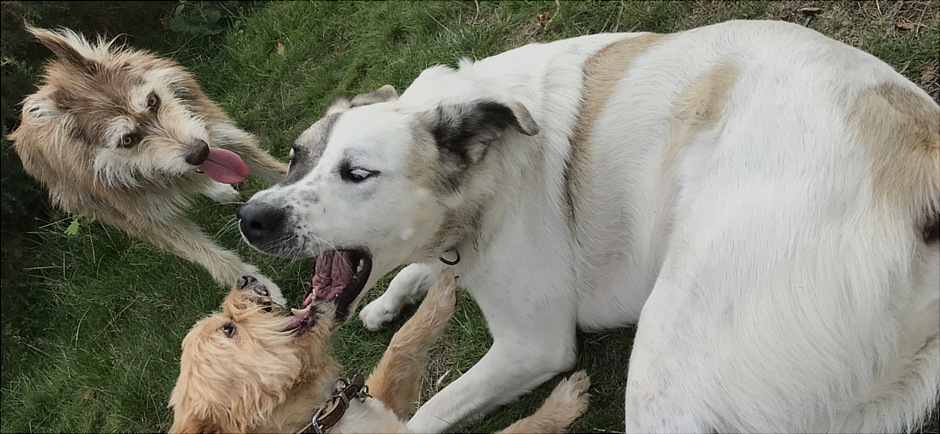

Just how can dogs fulfill their requirement for glucose through a diet of raw meat, bones, and organs ?
Sounds yuk and, I have to say, looks pretty yuk too sometimes !! I know a pair of pure breed hunting dogs that have been on raw diet since they were young. They are both incredibly healthy, ageing beautifully and never been to the vets except for boosters. I do think this idea is worth giving some thought, so please read on.
People and dogs alike need to breakdown the food they consume for a supply of energy. Glucose, a carbohydrate, provides this energy source and it is quick, easy, for our bodies to metabolise this from the foods in our diets. Dogs (and Cats) can produce glucose from the proteins and fats present in their diet. This process is called gluconeogenesis.
With that in mind, there is no known minimum dietary carbohydrate requirement for the dog (or cat). Based on investigations in the dog and with other species, it is likely that dogs (and cats) can be maintained without carbohydrates if the diet supplies enough fat or protein from which the metabolic requirement for glucose is derived.
Protein serves several important functions in any diet. It provides essential amino acids which react with protein for the growth and repair of organs and tissues. It is also the body’s principal source of nitrogen. Nitrogen is essential in the reaction of non-essential amino acids such as neurotransmitters. The degree to which a dog (or cat) is able to use dietary protein as a source of amino acids and nitrogen is affected by the digestability and quality of the protein.
Amino acids supplied by dietary protein can be broken down and used for energy. Proteins are highly digestible. Usually, the more digestible the protein, the lesser the amount that needs to be provided in the diet to achieve the availability of glucose. A dog’s stomach has a very high acid content specifically designed for breaking down protein-rich foods.
Seretonin is produced when protein is digested in the body. Seretonin is our relaxing hormone and promotes a sense of well being. It is that "I needed that" feeling like when you treat yourself to that sweet or savoury snack that you crave. Although seretonin is produced when carbohydrates are digested, high quality protein (e.g chicken, fish) produces a lot more.
Aside to this, protein provides a source of flavour. Different flavours are created when food proteins are cooked with carbohydrates and fats. In general, the higher the protein content, the more palatable and acceptable the food becomes.
So raw meat can provide a dog with an appropriate diet. Our dogs don’t need the carbohydrates that come from the high cereal content of many commercial dog foods. If you have read my page on feeding vegetables, the dog can assimilate the fibre, vitamins, minerals, etc., required to maintain a healthy body from other sources.
How do you know how much protein to feed ? Start by calculating how much food your dog should eat daily. This should be 2% of your dog’s body weight. Take my dog, Buster, as an example.
- Buster’s weight: 21.4kgs
- Daily Intake: 2% of 21.4kgs
- 20 / 100 = 0.214 x 2 = 0.428 kg or 428g of food per day
- My page on vegetables suggests feeding 5-20% vegetable matter so the balance should be 95-80% raw protein.
Buster will be switching his diet once he has almost eaten the last of the complete food he is currently on. I will switch him over a period weeks and have to experiment to see which foods he finds most yummy. The one thing I will be sure of with a raw diet is that he will eat it as soon as it is put in front of him ! No grazing throughout the day or ignoring his food.
This could be handy suggestion for owners who want to monitor their dog’s intake or encourage them to “eat up” so they won’t have the worry of withdrawing uneaten food. Uneaten food can be a breeding ground for bacteria especially in the warmer months. Also when using raw diet remember your regular food hygiene rules like washing your hands and storing in separate area of the fridge or freezer.
This will all depend on your dog’s age, health and activity levels. You may also want to consult with your vet before changing your dog’s diet. The daily intake would change if your dog is very young or very active (working). If you need help, you can check out this link to a diet calculator:
http://www.raw4dogs.com/calculate.htm

